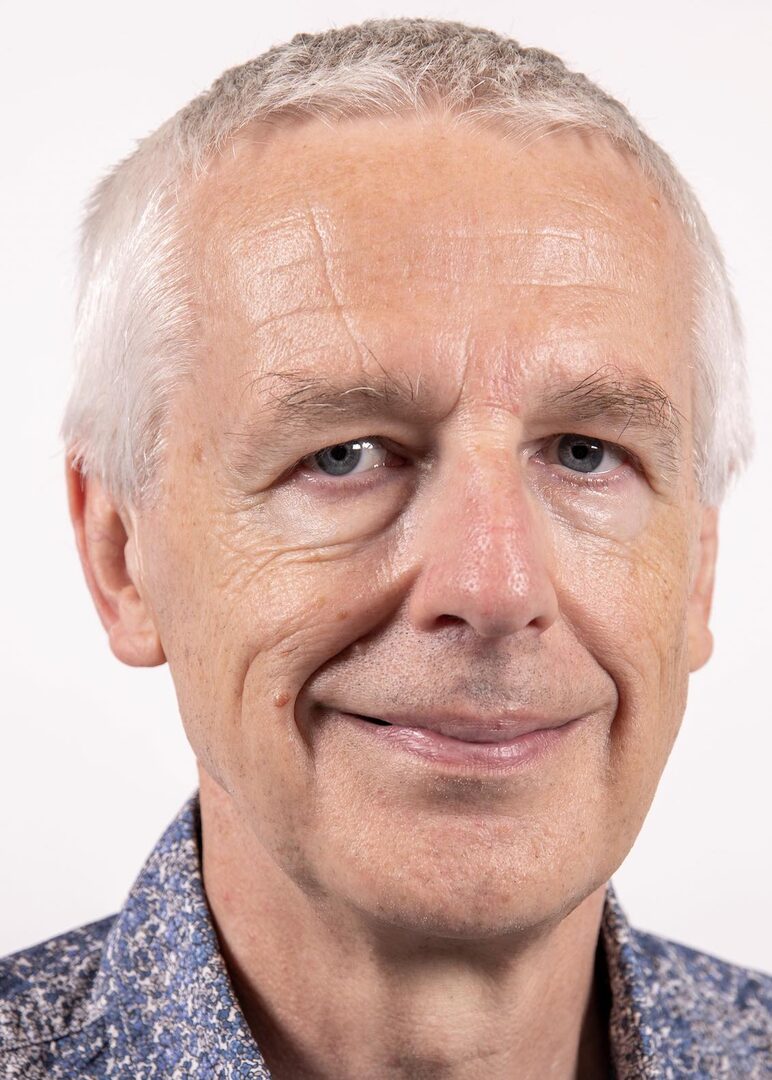Erik De Schutter
 Professor
Professor
erik at oist.jp
Personal  @erik_deschutter
@erik_deschutter
Erik De Schutter was born in Antwerp, Belgium. He studied medicine and got his MD in 1984 at the University of Antwerp, where he subsequently specialized as a neuropsychiatrist. During his medical residency he started work on computational modeling of central pattern generation in the leech (1). In 1990 he became a research fellow at the California Institute of Technology where he developed his famous Purkinje cell model (2). He returned in 1993 to the University of Antwerp to start the Theoretical Neurobiology group, with a focus on modeling the cerebellum. He became a senior lecturer at the University of Antwerp in 1999 and was promoted to professor in 2006. His research in Antwerp contributed to understanding synaptic plasticity (3, 8) and oscillations (4) in the cerebellum and on software development for reaction-diffusion modeling (6) and automated parameter searching (7). The group also contributed experimental studies on cerebellar physiology (5). Erik De Schutter became in a 2007 a principal investigator and since 2011 a professor at OIST where he leads the Computational Neuroscience Unit (see Publications). There he continued work on neuronal excitability (10) and molecular modeling of synaptic plasticity (11), but also expanded into analysis and development of dendritic morphology (12). More recently he published a new Purrkinje cell model (13) and started development of software for nanoscale modeling of neurons and synapses (14).
September 2018 - August 2022 he was Chair of the Faculty of OIST.
Erik De Schutter is involved with several international organizations promoting computational neuroscience (9). He is ex-president of the Organization for Computational Neuroscience.
Selected Publications
- E. De Schutter, J.D. Angstadt and R.L. Calabrese: A model of graded synaptic transmission for use in dynamic network simulations. Journal of Neurophysiology 69: 1225-1235 (1993).
- E. De Schutter and J.M. Bower: Simulated responses of cerebellar Purkinje cells are independent of the dendritic location of granule cell synaptic inputs. Proceedings of the National Academy of Sciences USA 91: 4736-4740 (1994).
 E. De Schutter and J.M. Bower: An active membrane model of the cerebellar Purkinje cell. I. Simulation of current clamps in slice. Journal of Neurophysiology 71: 375-400 (1994).
E. De Schutter and J.M. Bower: An active membrane model of the cerebellar Purkinje cell. I. Simulation of current clamps in slice. Journal of Neurophysiology 71: 375-400 (1994). 
- E. De Schutter: Cerebellar long-term depression might normalize excitation of Purkinje cells: a hypothesis. Trends in Neurosciences 18: 291-295 (1995).
- R. Maex and E. De Schutter: Synchronization of Golgi and granule cell firing in a detailed network model of the cerebellar granule cell layer. Journal of Neurophysiology 80: 2521-2537 (1998).

- B.P. Vos, A. Volny-Luraghi and E. De Schutter: Cerebellar Golgi cells in the rat: receptive fields and timing of responses to facial stimulation. European Journal of Neuroscience 11: 2621-2634 (1999).
- F. Santamaria, S. Wils, E. De Schutter and G.J. Augustine: Anomalous diffusion in Purkinje cell dendrites caused by dendritic spines. Neuron 52: 635-648 (2006).
- P. Achard and E. De Schutter: Complex parameter landscape for a complex neuron model. PLoS Computational Biology 2: e94, 794-804 (2006).
- V. Steuber, W. Mittmann, F.E. Hoebeek, R.A. Silver, C.I. De Zeeuw, M. Häusser and E. De Schutter: Cerebellar LTD and pattern recognition by Purkinje cells. Neuron 54: 121–136 (2007).

- E. De Schutter: Why are Computational neuroscience and Systems biology so separate? PLoS Computational Biology 4: e1000078 (2008).
- S. Hong, S. Ratté, S. Prescott and E. De Schutter: Single neuron firing properties impact correlation-based population coding. Journal of Neuroscience 32:1413–1428 (2012); S. Hong, M. Negrello, M. Junker, A. Smilgin, P. Thier and E. De Schutter: Multiplexed coding by cerebellar Purkinje neurons. eLife 5: e13810 (2016).
- G. Antunes and E. De Schutter: A stochastic signaling network mediates the probabilistic induction of cerebellar long-term depression. Journal of Neuroscience 32: 9288 –9300 (2012);
 A.R. Gallimore, T. Kim, K. Tanaka-Yamamoto and E. De Schutter: Switching on depression and potentiation in the cerebellum. Cell Reports 22: 722-733 (2018).
A.R. Gallimore, T. Kim, K. Tanaka-Yamamoto and E. De Schutter: Switching on depression and potentiation in the cerebellum. Cell Reports 22: 722-733 (2018). 
- Y. Kim, R. Sinclair, N. Chindapol, J. A. Kaandorp and E. De Schutter: The geometry of dendritic trees: minimal wiring cost bifurcations are flat. PLoS Computational Biology 8: e1002474 (2012); B. Torben-Nielsen and E. De Schutter: Context-aware modeling of neuronal morphologies. Frontiers in Neuroanatomy 8: 92 (2014).

- Y. Zang, S. Dieudonné and E. De Schutter: Voltage- and Branch-specific Climbing Fiber Responses in Purkinje Cells. Cell Reports 24: 1536–1549.
 ; Y. Zang, S. Hong and E. De Schutter: Firing rate-dependent phase responses of Purkinje cells support transient oscillations. eLife 9: 60692.
; Y. Zang, S. Hong and E. De Schutter: Firing rate-dependent phase responses of Purkinje cells support transient oscillations. eLife 9: 60692.  ; Y. Zang and E. De Schutter: The Cellular Electrophysiological Properties Underlying Multiplexed Coding in Purkinje Cells. Journal of Neuroscience 41: 1850-1863.
; Y. Zang and E. De Schutter: The Cellular Electrophysiological Properties Underlying Multiplexed Coding in Purkinje Cells. Journal of Neuroscience 41: 1850-1863. 
- I. Hepburn, S. Wils, W. Chen and E. De Schutter: STEPS: Efficient simulation of stochastic reaction-diffusion models in realistic morphologies. BMC Systems Biology 6: 36 (2012).
 ; I. Raikov and E. De Schutter: The layer-oriented approach to biological modeling languages. PLoS Computational Biology 8: e1002521 (2012).
; I. Raikov and E. De Schutter: The layer-oriented approach to biological modeling languages. PLoS Computational Biology 8: e1002521 (2012).  ; W. Chen and E. De Schutter: Parallel STEPS: Large Scale Stochastic Spatial Reaction-Diffusion Simulation with High Performance Computers. Frontiers in Neuroinformatics 11: 13 (2017).
; W. Chen and E. De Schutter: Parallel STEPS: Large Scale Stochastic Spatial Reaction-Diffusion Simulation with High Performance Computers. Frontiers in Neuroinformatics 11: 13 (2017). 




